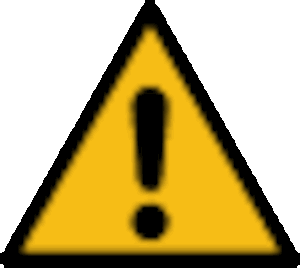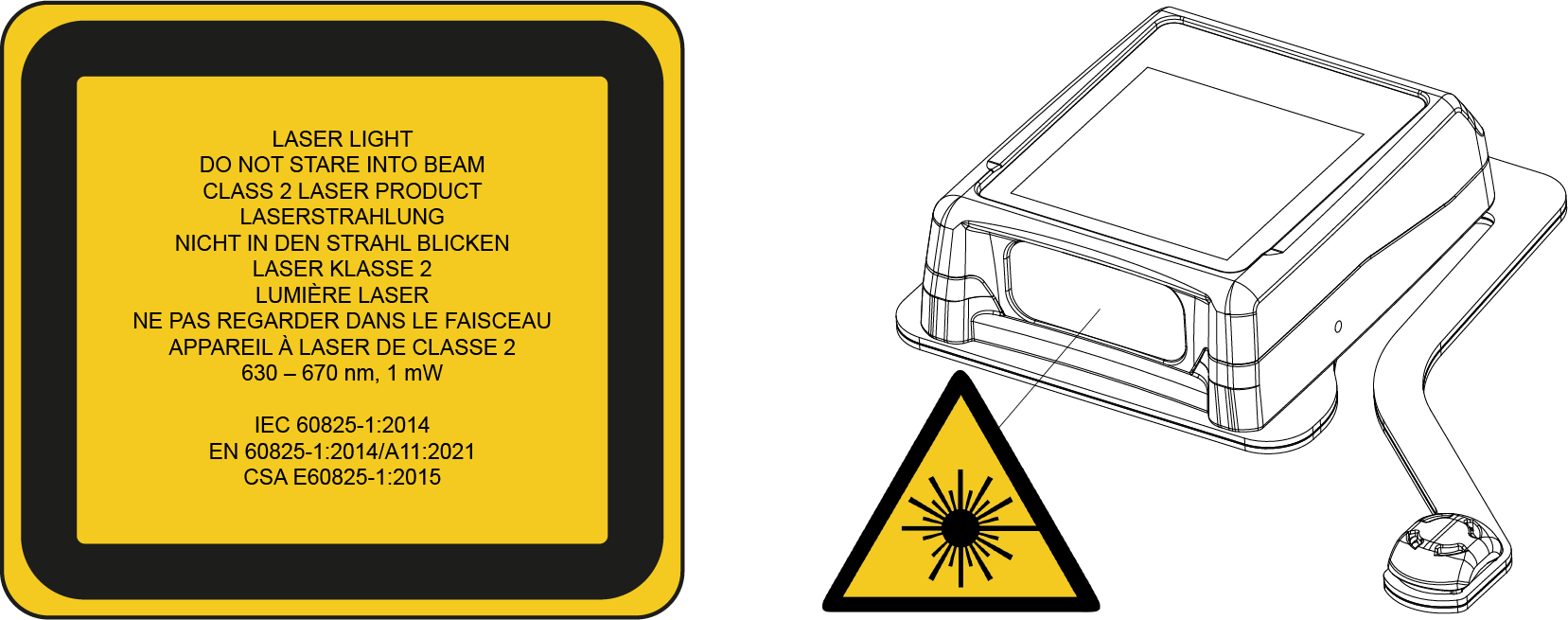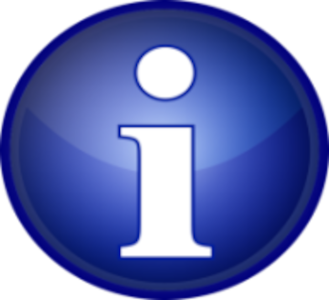Safety instructions
Read this chapter completely and carefully before installation and start-up and follow the safety instructions described in it. The manufacturer/supplier accepts no liability for any damage that occurs as a result of ignoring these instructions.
NIMMSTA devices have been developed, tested and manufactured in accordance with the state of the art and recognized safety regulations. Nevertheless, hazards to persons or third parties or damage to the devices or other material objects may occur during commissioning or use.
Improper installation or use of the device can endanger the user. If the safety instructions are not observed, damage to the device or equipment may occur. The in-house safety regulations (occupational health and safety, accident prevention) must be observed when installing and operating the equipment.
General notes
The product may not be opened by the operator/user. Contact customer service for repairs/system extensions. No modifications may be made by the operator/user. If this does happen, any warranty will be void. If the touchscreen is damaged (e.g. glass breakage), avoid contact of skin and mucous membranes (eye, mouth) with any escaping liquid. Clean already wetted body parts and clothing with plenty of water and soap.
Qualified personnel
The equipment may only be started up by qualified personnel. Therefore, this manual is only intended for trained personnel.
Intended use
This device is designed and intended for commercial use only. It is not intended for use by children or individuals who may lack the necessary knowledge or experience. Please carefully review the user manual and follow all safety guidelines provided. Keep out of reach of children and ensure that only qualified personnel operate and maintain the device.
Its designed and functionality compliant with the essential requirements of the Radio Equipment Directive 2014/53/EU, ensuring electromagnetic compatibility and efficient use of the radio spectrum.
 |
The devices are not designed for use in life-support systems, in safety-critical facilities or in EX-protected areas where the direct or indirect endangerment of human life cannot be ruled out due to malfunction of the system. This also includes locations where flammable gases or vapors are present. The use of these devices in the mentioned areas is excluded. |
Electrical connection hazards
AC power supply of the inductive charging station:
The charging stations can be connected without danger to both an earthed protective contact socket and a Europlug socket without a protective conductor.
Mains connection cable:
Do not use damaged cables. Damaged cables pose a risk of electric shock or fire. Observe the country-specific regulations when laying the cables. Make sure that the supply cable is not damaged by mechanical influences.
Only use the original power supply cables from NIMMSTA GmbH. If other cables are used, the operator is liable for any resulting damage. Furthermore, any warranty becomes void.
Accessibility of the socket outlet:
Please ensure that the socket for connecting the cable is easily accessible at all times when the charging stations are in operation.
Inductive charging stations
Safety instructions must be observed for the charging stations:
- The station may only be operated in an enclosed, dry environment
- People with pacemakers should consult their doctor before using the charging station
- To avoid fire hazard and risk of electric shock, protect the unit from moisture
- Any cleaning or maintenance may only be carried out with a dry cloth and the power unplugged
- Do not open the device
- Do not place anything between the wireless charging mat and the device to be charged. This can cause heating, fire and burns
- Place the charging mat on a horizontal, level surface
Internal battery Smart Watch HS 50
Only the battery installed in the device by NIMMSTA may be used. The battery may only be replaced by NIMMSTA. Improper replacement may result in damage to the device or, in some cases, injury. Charging of the battery is only allowed with the NIMMSTA designed charging stations "Multiple Wireless Charging Station" (serial number 10.000014-10.999998) or "Single Wireless Charging Station" (serial number 01.000016-01.999990). Do not incinerate, disassemble, short circuit, or expose the battery to temperatures higher than 140°F (60°C). This can lead to fire and explosion hazards.
Radio frequencies
| Bluetooth | NFC | Wireless Charging | |
|---|---|---|---|
| Frequency | Frequency band 2,4 GHz (2.402 - 2.480 GHz) |
13,56 MHz | 110 kHz - 205 kHz |
| Power transmitted | Maximum RF power transmitted +8 dBm | Working as a tag, power is dependent on reader | <-15 dBμA/m @ 10 m |
Transmitting power:
The maximum permitted transmitting power specified for the respective country must not be exceeded. The operator of the product must ensure this.
Aircraft and hospitals:
The product may not be operated in aircraft or hospitals without permission.
Medical implants / pacemakers:
The product may have an effect on the function of medical implanted devices and cause interference. A distance of at least 20 cm must be maintained.
CE marking
This device is developed and manufactured according to the VDE and CE directives.
Laser warning
- Complies with 21 CFR 1040.10 and 1040.11 except for conformance with IEC 60825-1 Ed. 3., as described in Laser Notice No. 56, dated May 8, 2019.
- EN 60825-1:2014
- IEC 60825-1 (Ed. 3.0)
 |
Use of controls, adjustments or performance of procedures other than those specified in this document may result in hazardous laser light exposure. Class 2 laser scanners use a low-power diode and visible light. As with any very bright light source, such as the sun, the user should avoid looking directly into the beam. Short-term exposure to a class 2 laser is not known to be harmful. |

 |
The product may emit hazardous optical radiation. Prolonged, direct viewing of the operating light can be harmful to the eyes. |
 |
Only use the device as specified in the operating instructions. |
 |
Do not look directly into the laser of the device. |
Light Tag with Mounting Unit
The Mounting Unit ("Light Tag Mounting Unit with Tape") is fitted with adhesive tape at the factory.
Wall or ceiling mounting with tape
Remove the protective film.
For optimum adhesion, the surface must be clean, dry and free from dirt such as dust or grease.
The cleaning cloths supplied are recommended for cleaning.
Wall or ceiling mounting with tapping screw
Countersunk screws with a maximum nominal diameter of 4.3 mm and a head diameter of 7.9 mm can be used.
Recommendation: Tapping screw ISO 14586 Form C Ø3.5×13, stainless steel A2, bare, Torx, countersunk head.
Wall or ceiling mounting with cable ties
Cable ties with a width of 4.35 mm and a height of 1.8 mm can be used.
Recommendation: Cable tie 3.6×200 mm, PA natural.
 |
Make sure that no excessive mechanical load is applied to the bracket for any type of installation. Check the adhesion or screw connection after installation. |
Internal batteries Light Tag
Only batteries installed in the device by NIMMSTA may be used. Batteries may only be replaced by NIMMSTA. Improper replacement may result in damage to the device or, in some cases, injury.